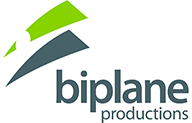Newsletters & Fruitcakes
 The word newsletter used to evoke an internal groan akin to the one for holiday fruitcake. For decades, newsletters were more blessed to give than receive. With desktop publishing and internet technology constantly improving, though, in-house newsletters have made improvements by leaps and bounds.
The word newsletter used to evoke an internal groan akin to the one for holiday fruitcake. For decades, newsletters were more blessed to give than receive. With desktop publishing and internet technology constantly improving, though, in-house newsletters have made improvements by leaps and bounds.
That said, not all newsletters are created equal. I’m not just talking about printed pieces versus email or online versions. See, some build positive recognition of their company’s brand. Others are still wrapped in their green cellophane. The recipient knows the sender means well, but they’re not going to stop from their mail sort to absorb the content. So, here are some tips to keep that from happening to your newsletter.
Establish Your Expertise
The primary function of the newsletter is to inform the reader in a way that establishes your company as an expert source. The residual effect of newsletter investment may take years. If you need to borrow articles to fill the space, you are still communicating your knowledge prowess—because you know where to direct others for information. Just make sure to obtain permission and properly attribute the source(s).
Serve the Reader First, Your Company Second
You wouldn’t want to read your local used car dealer’s run down of his sales reports. Your prospects don’t want to read your litany, either. But if your local car dealer sold the first off the assembly line or accepted a trade-in from a celebrity, then he’d have your interest. What’s in your piece for your reader? Make them care about your business by caring about their interests. Save your “sold!” gallery for your web site. Spend time to obtain quotes and supporting materials that will make your newsletter more journalistic, more professional, and more engaging.
Graph-fiti Like a Gang Member
If you want to illustrate your accomplishments, don’t toot your horn with paragraphs of text. Give your successes context with chart and graphs. I recommend showing sale prices in relation to appraisals/assessments or sales by day of the week or month of the year. Compare types of auction properties, or map types of properties per geographic area. Chart online bidders versus live ones over a span of sales. Make abstract ideas concrete by illustrating them graphically.
Use Large Photos and Lots of White Space
If your piece looks more like a bible page and less like a magazine spread, seek professional help. This isn’t high school yearbook class or “BUS 107: Intro to Business Forms.” Your newsletter carries your brand as much as any other media you place in front of your audience. Break stories up with pull quotes, statistic boxes, charts, and inset photos. Don’t’ crowd content, especially text. Use action photos as much as possible. Use a test audience, especially one unfamiliar with your news.
Stay on Schedule
Determine a schedule—whether monthly, quarterly, or annually—that will allow for you to consistently generate original content. You want to develop a distribution pattern, even if a sparse one. If you have extra material for one release—rather than try to shoe horn it into this issue, save the least time-sensitive content for the next issue.
You can save your newsletter from the round file the same way you would protect a Christmas food gift investment: give something the receiver will want to eat. Put some thought into it. Avoid the non-refundable bargain bin.
And make sure the old family “special recipe” stays at home.
[tip]
The underlying message of your newsletter is, “We are experts. You can trust your business with us.” What is the underlying, almost-thematic message of your life? Do you sift your actions and goals though the sieve of that statement?
For me, I want it all to match my life goal: to live a creative nonfiction life of spiritual and physical adventure that, with integrity, will draw others into the same. It doesn’t take too long on my web sites and facebook pages to see the ways I pursue that (successfully or not). But the chase makes the mundane less so, the necessary a contribution—and a positive legacy possible.
Is the way you’re writing the pages of your life story pulling people into the bigger picture? If not, you can still edit and rewrite the remaining pages—starting with today’s.
[footer]Stock image(s) used by permission through purchase from iStockPhoto.com ©2008[/footer]
